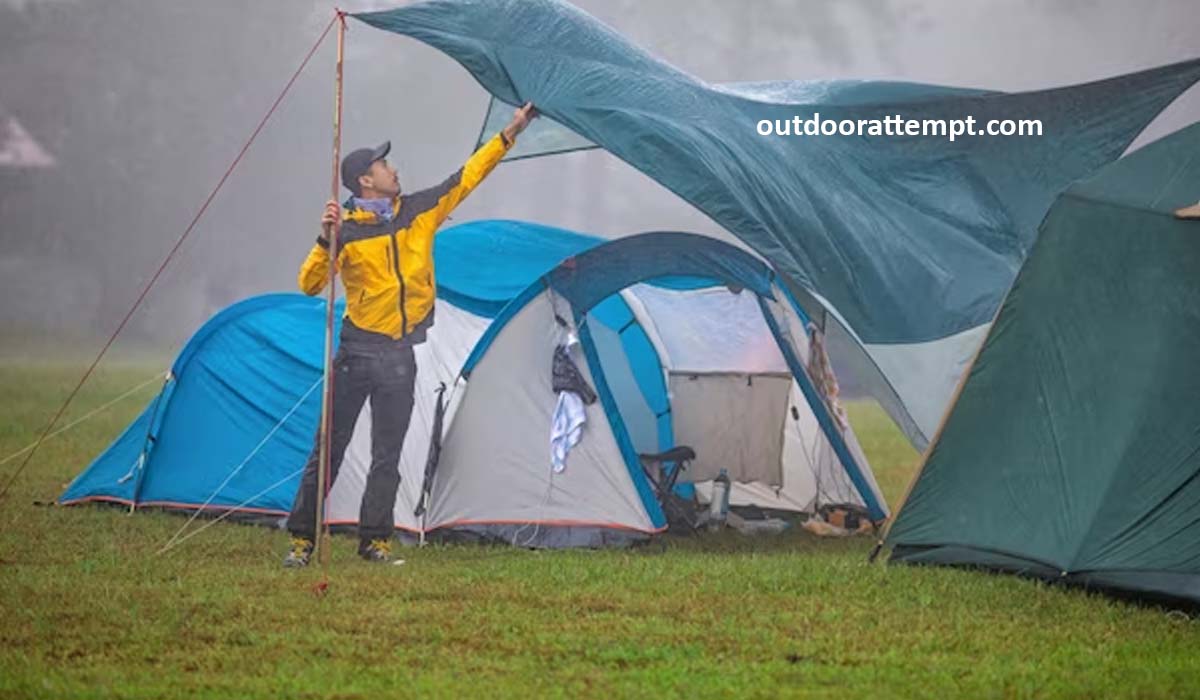Seeking Shelter in the Midst of a Severe Thunderstorm Camp. Between the blinding rain and ear-splitting thunder, it’s hard to stay calm during a severe thunderstorm. But if you know what to do, you can stay safe until the storm passes.
In this REACT Camp, you will learn how to:
-Recognize the dangers of severe thunderstorms
-Find shelter from the storm
-Stay safe during the storm
-Prepare for the next storm
Seeking Shelter in the Midst of a Severe Thunderstorm Camp
Every year, thunderstorms cause billions of dollars in damage and kill hundreds of people in the United States. These powerful storms can produce damaging winds, large hail, flash flooding, and tornadoes.
While thunderstorms can occur at any time of year, they are most common in the spring and summer months. If you live in an area that is prone to severe thunderstorms, it is important to be prepared.
One way to be prepared is to have a plan for where you will seek shelter if a thunderstorm warning is issued for your area. This may mean having a designated safe room in your home, or Knowing the locations of nearby safe shelters.
In this article, we will discuss the different types of thunderstorms and the dangers they pose. We will also provide tips on how to stay safe during a thunderstorm and what to do if you find yourself in the path of one.
What is a Thunderstorm?
A thunderstorm is a type of storm that is characterized by the presence of lightning and thunder. Thunderstorms form when warm, moist air rises into the atmosphere and collides with cooler air. This can happen when warm air from the Gulf of Mexico collides with cooler air from Canada.
Thunderstorms can also form when a cold front moves through an area. Cold fronts are areas of low pressure that move through an area, bringing with them colder air. As the cold air moves in, it forces the warm air to rise.
Thunderstorms can occur at any time of year, but they are most common in the spring and summer months. This is because the warm, moist air that is necessary for thunderstorm formation is more common during these months.
Thunderstorm Warnings
The National Weather Service (NWS) issues thunderstorm warnings when thunderstorms are expected to produce damaging winds, large hail, or flash flooding. Tornadoes can also occur with thunderstorms, but they are typically not included in thunderstorm warnings.
Tornadoes are typically covered under tornado warnings, which are issued separately. If a tornado is expected to occur with a thunderstorm, the NWS will issue a tornado warning along with the thunderstorm warning.
Thunderstorm warnings are issued for a specific area, and they are typically in effect for one to two hours. If you are in an area that is under a thunderstorm warning, you should take shelter immediately.
Severe Thunderstorms
Severe thunderstorms are thunderstorms that produce one or more of the following:
-Damaging winds of 58 mph or more
-Hail that is 1 inch in diameter or larger
-Flash flooding
-Tornadoes
Severe thunderstorms can occur at any time of year, but they are most common in the spring and summer months. This is because the warm, moist air that is necessary for thunderstorm formation is more common during these months.

If you are in an area that is prone to severe thunderstorms, it is important to be prepared. This means having a plan for where you will seek shelter if a thunderstorm warning is issued for your area.
Thunderstorm Safety
If you are caught outside during a thunderstorm, there are a few things you can do to stay safe:
-Seek shelter immediately. If possible, go to a building or car.
-If you cannot find shelter, stay in the lowest part of an open area.
-Avoid tall objects, such as trees, towers, and power lines.
-Avoid bodies of water.
-Do not lie on the ground.
-If you are in a car, pull over to the side of the road and stop. Do not touch metal surfaces.
If you are caught inside during a thunderstorm, there are a few things you can do to stay safe:
-Seek shelter in a small, enclosed area, such as a closet or bathroom.
-Stay away from windows and doors.
-Do not use electrical appliances.
-Do not use corded phones.
-If you are in a car, Pull over to the side of the road and stop. Do not touch metal surfaces.
Seeking Shelter in the Midst of a Severe Thunderstorm Camp
Thunderstorms can occur at any time of year, but they are most common in the spring and summer months. If you live in an area that is prone to thunderstorms, it is important to be prepared. This means having a plan for where you will seek shelter if a thunderstorm warning is issued for your area.
In this article, we have discussed the different types of thunderstorms and the dangers they
The Impact of Surviving Nature’s Fury: Seeking Shelter in the Midst of a Severe Thunderstorm Camp on Survival Gear
The Fear of the Storm
As the skies darken and the wind picks up, there is an undeniable sense of dread that comes with severe thunderstorms. For those who have experienced the terror of being caught in one, the fear is real. With high winds and driving rain, thunderstorms can quickly turn deadly.
The Importance of Planning
Whether you are caught in a thunderstorm while camping or at home, it is important to have a plan. Knowing what to do and where to go can be the difference between life and death.
The Necessity of Shelter
If you are caught in a thunderstorm, your first priority should be to find shelter. While a tent offers some protection, it is not always enough. If you can get to a building or other solid structure, that is the best place to be.
The Danger of Floodwaters
Another hazard to be aware of during a thunderstorm is flooding. If there is any chance of flash flooding in the area, you should avoid camping near riverbanks or low-lying areas.
The Aftermath of the Storm
Once the storm has passed, it is important to assess the damage. If your campsite has been damaged, it is important to clear away any debris that could present a hazard. downed power lines, for example, should be avoided. If you have any injuries, it is important to seek medical attention as soon as possible.

Thunderstorms can be dangerous, but if you are prepared, you can survive. By following these tips, you can increase your chances of making it through a severe thunderstorm unscathed.
Surviving a severe thunderstorm can be a daunting task. With the right preparation and knowledge, however, it is possible to stay safe and even thrive in the aftermath of these powerful storms.
Seeking Shelter in the Midst of a Severe Thunderstorm Camp
Another crucial step is to stay informed. Monitor the weather forecast and be aware of severe thunderstorm warnings. When a warning is issued, take immediate action to find shelter.
By following these simple steps, you can greatly improve your chances of surviving a severe thunderstorm.
What do you need to know before seeking shelter during a thunderstorm?
Many people enjoy camping as a way to escape the hustle and bustle of city life and to connect with nature. However, when severe weather strikes, it is important to be prepared in order to stay safe. A severe thunderstorm can bring high winds, heavy rains, and hail, so it is important to have a plan in place in case you find yourself in the middle of one.
How can you stay safe during a thunderstorm?
One of the first things you should do if you find yourself in a severe thunderstorm while camping is to seek shelter. If you are in a tent.
What is the best way to stay informed about thunderstorms?
Once you are in shelter, it is important to stay away from windows and doors and to avoid using electrical appliances. If possible, unplug any appliances that are in use and turn off any lights. So If you are using a generator, make sure to turn it off as well.
What should you do if you are caught outside during a thunderstorm?
If you are caught outside during a thunderstorm. Avoid taking shelter under a tree as this can make you more susceptible to lightning strikes.
What are the risks of being outdoors during a thunderstorm?
If you are unable to find shelter. Lying flat on the ground in a low-lying area can help to protect you from high winds and flying debris.
What should you do if you hear thunder?
Once the storm has passed, it is important to assess the damage and take steps to stay safe. Beware of downed power lines and flooding. If possible, stay inside until the storm has completely passed and it is safe to venture outside.
What should you do if you see lightning?
One of the most important things to do before a severe thunderstorm hits is to have a plan in place. Know where you will go if you need to take shelter and have a contingency plan in place in case your first choice is not available. It is also important to have supplies on hand, including food, water, and a first-aid kit.
What are some of the common myths about thunderstorms?
Make sure to secure it as best as possible and get inside. If you are in an RV, make sure to secure any loose items on the outside and then seek shelter inside.
What are the different types of thunderstorms?
By taking shelter and avoiding electrical appliances, you can decrease your chances of being injured or even killed if a severe thunderstorm strikes while you are camping.
What is the difference between a thunderstorm watch and a thunderstorm warning?
While thunderstorms can be frightening, if you are prepared and take the necessary precautions, you can stay safe.
